What we were Looking for: Best Headphones for Mixing
Mixing with headphones is an essential step in every producer’s process. Mixing with the wrong headphones is a waste of time.
We have done a lot of the work here for you. In search of the best headphones for mixing, we shortlisted 10 popular models all priced under $800, rigorously tested them, and carefully considered how they might affect your mix.
The qualities we were looking for in headphones for mixing were:
- open-back design
- relatively neutral frequency response
- natural-sounding, without ‘enhancements’
- extensive, realistic soundstage with accurate imaging
Two models we wanted to include, but couldn’t get a hold of for this review were the Beyerdynamic DT 990 Pro and the Audio-Technica ATH-R70x.
See here for all of our reviews of microphones, headphones, and other audio gear.
Under $800
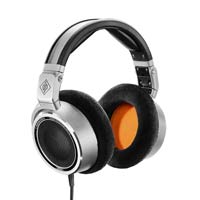
Pros
- High detail resolution
- Natural, open sound
- Perfectly tuned for mixing – neutral
- Full, clear bass
Cons
- Earcups are small and circular, creating a poor seal and fit for some.
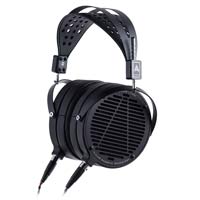
Pros
- The most technically capable cans on this list
- Outstanding transient response
- Full, quick bass response
- Built with first-class materials
Cons
- Requires EQ to achieve neutral response.
- Confusing dip in the high mids
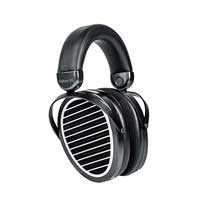
Pros
- XL earcup allows for a vast, immersive soundstage
- Outstanding transient response
- Supple bass
Cons
- Require EQ for neutral frequency response
- Lack dynamic punch
- Build quality not on par with rivals
Under $500
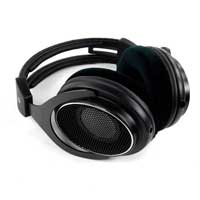
Pros
- Excellent detail resolution
- Refined, delicate, open sound
- Perfectly tuned for mixing – neutral
- Comes with hardshell case, extra ear pads, and an additional cable.
Cons
- Lower mids have some harmonic distortion, but not enough to be obvious in our musical examples.
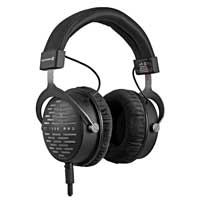
Pros
- Superb dynamic punch
- Best soundstage on this list
- Outstanding detail resolution
- Great bass response
- Comes with hardshell case, extra ear pads, and an additional cable.
Cons
- Sibilance around 8 kHz is out of balance in rare cases
- Clamping force of the headband is a bit too strong out of the box
Under $400
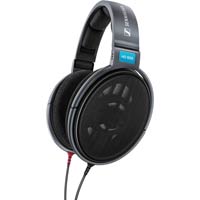
Pros
- The most natural sound on this list
- Most comfortable on this list
- Great detail
Cons
- Bass extension and presence could be better
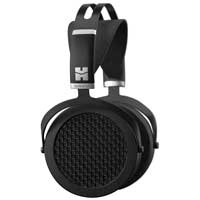
Pros
- Pristine, ultra-fast transient response
- Good detail
- Unclouded, present bass
- Affordable price
Cons
- Not great at capturing room reverb or atmosphere
- They lack the dynamic punch needed for some genres
- Cable is rigid and short
Under $200
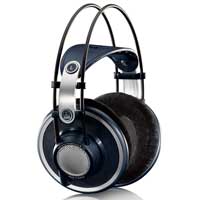
Pros
- Great price – Best value headphones on this list
- Expertly tuned with exciting, well-defined mids
- Comfortable
Cons
- Bass roll-off starts a bit early, around 150 Hz
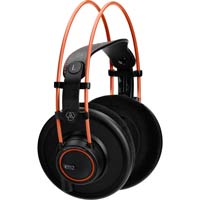
Pros
- Comfortable
Cons
- Not tuned well for mixing – overly warm with bloated bass and lower mids
- They don’t respond well to EQ
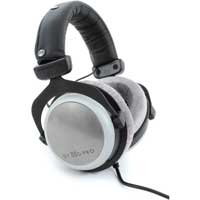
Pros
- Spacious, realistic soundstage
- Respond well to EQ
- Comfortable
- Good Price
Cons
- Lack a lower bass extension
- Cable not detachable
Neumann NDH 30
our rating For Mixing
4.8
Bottom Line:
High detail resolution, natural sound, and perfectly tuned for mixing. Small earcups could be an issue for some.
The NDH 30 is an open-back version of the NDH 20, released in 2022. The NDH 20 closed-back monitoring headphones became our favorite closed-back option for mixing. For this reason, we were especially curious to see how the NDH 30 would sound.
See here for our complete review of the Neumann NDH 30 headphones.
Build
The NDH 30 headphones are an old-school, rugged build: stainless steel and aluminum frame with perfectly circular velour ear pads. They fold up nicely and come with a single, straight, detachable, 3-meter, cloth-covered cable. Also in the box is a draw-string pouch for storage.
Comfort
The earpads on the NDH 30 headphones are not uncomfortable, but others on this list have more comfortable, better sealing options. My medium-to-large-sized ears touch the velour ear pads at the top and bottom and ever-so-slightly on the drivers inside the cups.
The circular shape of the earcup doesn’t help but also they are relatively small circles and can cramp the ear at the edges.
Overall, the design is functional, and decently comfortable, but not ideal. They can be worn for longer mix sessions, but if smaller ear cups are a problem for you, they will probably annoy you at some point.
Sound
As tools for mixing, these headphones have all the traits you’re looking for: flat frequency response, high-resolution detail, and extensive soundstage with very accurate, consistent imaging.
The detail resolution is better than almost all of the headphones listed here. They are tied in this regard with the Shure SRH1840 and Beyerdynamic DT 1990 Pro.
The sound of the NDH 30 headphones is generally open and natural. The frequency response is very flat and similar to that of the Sennheiser HD 600. They have the same dip in the upper mids 1500 Hz – 3500 Hz.
They differ from the HD 600 in that they have more dynamic punch and a more intense bass experience.
The bass is simply further extended, starting its sub-bass roll-off around 60 Hz. The bass presence never sounds overdone and never overshadows the lower mids.
Conclusion: Neumann NDH 30
The only downside to the Neumann NDH 30 as mixing tools is the small earcup design.
However, the earcup design is no small matter. It affects the way the sound arrives at the ear and the user experience of that sound. If you’re picky about the earcup and how it fits your ears and head, it is worth trying these out first to see if they work for you.
In terms of overall performance, in comparison to the Shure SRH1840 or the Sennheiser HD 600, which both have similarly flat frequency response and a very natural sound, these are a step up due to a little higher resolution and a more impressive bass response.
Audeze LCD-2 Classic
our rating For Mixing
4.6
The LCD-2, released in 2009, brought planar magnetic headphones into regular studio use. This model has seen a lot of tweaks and upgrades since.
We reviewed the LCD-2 Classic, the most affordable of the line. These headphones have the same drivers as the more expensive LCD-2 without the ‘Fazor waveguide technology’ which is supposed to reduce interference and improve resolution.
Build: Audeze LCD-2C
The LCD-2 Classic ships in a beautiful hardshell, lockable case. It comes with a braided 1.9m 1/4 inch to dual 4-pin mini-XLR cable. The sturdy headphones are constructed primarily with metal, pleather, and leather weighing in at 544 grams.
The LCD-2 Classic is the most affordable of the Audeze LCD line but has the same premium build quality as the LCD-5 (currently going for $4500).
The plush pleather earcups are nearly 2 inches thick, separating the driver a nice distance away from your ear. Although the cups are perfect circles, they are big enough not to touch any of the outer edges of my (medium-to-large size) ears.
Comfort: Audeze LCD-2 Classic
The leather headband (they also have a no-leather version) is the dual-layer weight-dispersing kind that I love so much. This means that despite the hefty 544-gram weight, you barely feel the headband on your head.
The large earpads make a fantastic seal with my head. Their large size should make them more likely to seal to most heads and ears.
These are comfortable enough for longer mix sessions. As they are essentially tight-sealing pleather ear muffs, they might get a bit warm in the summer.
Sound: Audeze LCD-2 Classic
The LCD-2 Classic are very capable headphones but out-of-the-box, they are not tuned well for mixing. However, because the LCD-2 Classics are technically so capable, their performance will scale with the source equipment used and respond to EQ adjustments better than any on this list.
With a little EQ, these become a completely different set of headphones. If you use the Audeze Reveal + plugin or other headphone calibration plugins, you can create a flat response for mixing with these quite easily.
Without EQ, what I first noticed upon turning these things on is their quick transient response, warm high-end, nice bass response, and a strange dip in the upper mids.
The dip in the upper mids is the most problematic as it creates a distance between the listener and the music.
The bass response is icy, fast, and full. I daresay, it even has a bit of punch to it, which is not something I can say for a lot of planar headphones.
The soundstage is not as wide as the DT 1990 Pros or the Neumann NDH 30, but satisfying without any gaps in the imaging.
Conclusion: Audeze LCD 2 Classic
If you crave that super-fast transient sound of good planar magnetic headphones, these won’t disappoint. They are a big step up from the Hifiman Sundara headphones (and they should be at this price point).
The build quality, the bass response, and their flexibility with EQ make them a splendid tool for mixing. But if you don’t want to mess with having an EQ preset for your mixing headphones, these are not your cans.
Hifiman Edition XS
our rating For Mixing
3.7
The Hifiman Edition XS headphones are planar magnetic headphones aimed at bringing the higher-end performance and design of the Hifiman Ananda model to a price under $600.
See here for our complete review of the Hifiman Edition XS
Build: Hifiman Edition XS
The greatest advantage these headphones have over others on this list is the earcup design.
The extra large, elongated earcup design means that no part of your ears is likely to touch anything on these headphones. It’s as if you are inside the driver. The sound is up, down, and all around.
You are also further away from the drivers than most headphones. With a good seal to your head, this distance from the driver gives a natural boost to the bass presence.
On the downside, the build quality could be better. At this price point, I expect a premium quality build along the lines of the Beyerdynamic DT 1990 or the Audeze LCD-2 Classic. These just don’t match the competition in this regard.
It is worth noting that despite their low impedance (18Ω), the Edition XS will need a good amplifier or audio interface with an integrated amp to achieve optimal sound.
Comfort: Hifiman Edition XS
Unless you have absolutely giant ears, the cups are unlikely to touch any part of your ear. All the contact is with the cushions of the earpads to your head.
The clamping force of the headband is relatively weak. They are not the lightest headphones (405 grams) but the cushy contact points make them feel lighter.
In general, they are comfortable and can be worn for long sessions.
Sound: Hifiman Edition XS
The Edition XS are not as neutral in their frequency response as you might like for mixing. There is a slight boost in the sub-bass area, mids are dipped a bit, then there is a boost around 8 kHz with a quick roll-off at the very top from 8-10 kHz.
The warmth at the top created by the roll-off makes them less good at identifying problems in the treble region.
They respond well to EQ, but not quite to extent that Audeze LCD-2 Classic do. I found that with calibration plugins or simply EQ, the Edition XS could deliver a mixable, neutral response.
The transient response is impressively speedy. This is especially satisfying in the bass where things feel unusually articulated and crisp. If you were working with EDM, this clarity at the bottom has real benefits.
The soundstage of the Edition XS is broad and satisfying. Moreover, the earcup design helps puts you inside this stage.
Conclusion: Hifiman Edition XS
The Edition XS headphones’ immersive experience, vast soundstage, and quick transient response are undoubtedly satisfying attributes, especially at this price.
But if the idea of equalizing your headphone output for mixing annoys you, there are better options on this list.
Shure SRH1840
our rating For Mixing
4.9
Bottom Line:
All the tools you need for critical listening are here. One of the best on this list.
The Shure SRH1840 are Shure’s premier headphones, designed for mastering and critical listening.
The neutral frequency response helps you pinpoint instruments in the soundstage and accurately examine mixes across all frequencies. Their delicate, open sound signature is perfectly suited to mixing.
See here for our complete review of the Shure SRH1840 Headphones.
Build: Shure SRH1840
Shure supports the idea that these are premium headphones with the luxurious box they arrive in, the hard, zip-up carry case with extra ear pads and an additional cable.
The design of the SRH1840 headphones is minimal and durable. Nothing feels like it’s going to snap off anytime soon. The aluminum alloy frame and stainless steel grilles over the drivers feel reliably robust.
Comfort: Shure SRH1840
These are very comfortable on my head. That said, some users complain that the headband is a bit too hard on the top of the head. Indeed, the padding on the headband could be ampler.
The velour earcups form a tight seal around the ears but the earcups are could be deeper. Of course, all heads and ears will have a different fit, but in my case, the inner cup does touch my ear, ever-so-slightly.
Sound: Shure SRH1840
The SRH1840 headphones have a unique, refined, delicate sonic signature. They deliver neutral frequency response, nimble transient response, and a balanced natural-sounding low-end.
The detail resolution is some of the highest on this list, especially on the top end and the mids. Identifying individual instruments and possible recording problems becomes much easier.
The mid-range comes forward without falling out of balance with the top and bottom. Vocals are brought forward in the soundstage, much more than other headphones on this list.
The bass response is not as full as the Beyerdynamic DT 1990s, and yet the bass is always present and clear. 20 Hz is more present on the SRH1840 than most of the competition. The sub-bass roll-off is very gentle and doesn’t even begin until 50 Hz.
Conclusion: Shure SRH1840
The Shure SRH1840 headphones give you all the tools you would want in a pair of reference headphones with dynamic punch and musical response to boot.
These are a must-try on this list.
Beyerdynamic DT 1990 Pro
our rating For Mixing
4.9
Bottom Line:
Premium reference headphones with remarkable detail retrieval, spacious soundstage, strong bass presence, and dynamic punch. Difficult not to like.
The Beyerdynamic DT 1990 Pro are premium, dynamic driver headphones that set the bar extremely high for headphones under $500.
Beyerdynamic has been developing dynamic driver headphones since 1924, and these decades of handiwork show in the attention to detail with all of their headphones – especially these.
See here for our complete review of the Beyerdynamic DT 1990 Pro.
Build: Beyerdynamic DT 1990 Pro
More than any other cans in this price range, the Beyerdynamic DT 1990s feel like a premium headphone. Like all of the Beyerdynamic cans, they are sturdy and hard-wearing, but the build quality on these is luxurious.
They feel like they are cut from one stone, a single unit. The headband, an aluminum frame covered by cushy pleather, can be size-adjusted with a gentle ratchet motion.
The cable attaches only to the right ear side, which for studio use is ideal.
They come with two cables (one 3-meter straight, one 5-meter coiled), two different sets of ear pads, and a hardshell carry case. All of the accessories are top quality.
Comfort: Beyerdynamic DT 1990 Pro
The DT 1990 headphones are reasonably comfortable, but the clamping force of the headband can be a bit strong for some heads out-of-the-box.
Their sturdy build looks heavy but is surprisingly lightweight, at 370 grams. The earcups gave ample space to my (medium to large size) ears. Nothing inside the earcup touched my ear.
If the clamping force is not a problem for you, they can definitely be worn for long sessions.
Sound: Beyerdynamic DT 1990 Pro
Three qualities stand out: these cans have the most extensive soundstage on this list, top-class dynamic punch, and minimal distortion.
Of course, for analytical purposes, the wider soundstage of the DT 1990 Pros means it is easier to identify instruments in a mix because they’re not all packed in the same acoustic space.
The bass response of these is also superb. The transient response of these cans is fast in general, but it is particularly noticeable in the bass.
The mids have high-resolution and natural sound. The upper frequencies on the DT 1990 Pros have produced complaints from some audiophiles. There is a boost around 8 kHz that can upset the balance on some tracks, leading to pronounced sibilance.
Most of the time, however, the top of the DT 1990 Pro headphones feels brilliant, bringing out details in tracks that are unnoticed with other headphones.
Conclusion: Beyerdynamic DT 1990 Pro
Due to their fantastic detail retrieval, dynamic punch, and soundstage, we highly recommend giving the Beyerdynamic DT 1990 Pro a try. It’s simply difficult not to like these cans.
Sennheiser HD 600
our rating For Mixing
4.9
Bottom Line:
Classic reference headphones that deliver the most natural sound on this list.
The Sennheiser HD 600 headphones, upon their release in 1997, set a new benchmark for reference headphones. To this day they remain beloved by many audiophiles and engineers for their neutral, natural sound.
A lot has happened in the development of headphones since 1997, so we rigorously tested these classics to see how they hold up to the competition. We found them to be the most natural-sounding set of headphones on this list.
See here for our complete review of the Sennheiser HD 600.
Build: Sennheiser HD 600
The overall build quality of the Sennheiser HD 600 headphones is surprisingly good. (I was at first skeptical of the plastic folding parts)
Despite the plastic frame, however, these headphones do last the test of time. Fellow engineers have confirmed that the only vulnerable parts are the foam padding under the headband and the ear pads. These are easily replaceable and not expensive.
The 3-meter cable is made of kevlar-reinforced oxygen-free copper terminating in a mini-jack with a standard 1/4-inch adapter included.
No carry case is provided, which you would probably want at this price.
Comfort: Sennheiser HD 600
The HD 600s can be worn easily for hours without fatigue. So much so that you can forget they are on! For me, these were the most comfortable on this list.
They are seriously light, at just 260 grams. But also, the velour ear cups and the adjustable, center-folding frame sort of massage onto your head. The headband adjusts with a ratchet motion extending from aluminum strips.
The tight grip of the phones on the head can be adjusted by lowering the ear cup position. It’s worth noting as well that the out-of-the-box clamp force does relax with use. In this way, they adjust to the size of your head over time.
The earcups are large and do not touch any part of my (medium-to-large-sized) ears.
Sound: Sennheiser HD 600
Like all aspects of these headphones, the bass sounds natural. The way the transients bleed ever-so-slightly into each other in the upper bass with the HD 600, still sounds more realistic to my ears than planar magnetic headphones.
That said, the bass extension could be better. A sharp roll-off starts quite early around 90 Hz.
The midrange absolutely shines on the HD 600. Detail resolution is intense yet everything feels transparent and natural: guitars, strings, brass, and vocals all come to life. And the dynamic punch in this area especially is satisfying.
Everything in the treble is also well-balanced and natural sounding. Sibilance is never a problem and the air at the very top gives a sense of sparkle and headroom to the top.
The soundstage is a deep, narrow space. The center channel feels far forward. Although the soundstage is not as wide as some others on this list, it never feels simply limited to the center of the head.
Conclusion: Sennheiser HD 600
The Sennheiser HD 600 proves that newer is not necessarily better. If you’re in the market for reference headphones, you won’t be disappointed by these.
You can forget you are wearing these because they are so lightweight and comfortable. Similarly, the sound of these classics is so well-balanced that they feel easier to listen to these for long sessions than other headphones.
Other newer headphones in the same price range might outperform the HD 600 in some categories, but what the HD 600 still has going for them is how natural sounding they are.
Hifiman Sundara
our rating For Mixing
4.7
The Hifiman Sundara headphones are popular for a reason: they deliver the fantastic transient response of very expensive planar magnetic headphones at an affordable price.
If you want to hear lightning-speed snare hits that are perfectly separated without remortgaging your house, these are the headphones you are looking for. See here for our complete review of the Hifiman Sundara.
Build: Hifiman Sundara
This is a sturdy utilitarian build, similar to the Beyerdynamic no-nonsense look. The aluminum frame with ratchet motion size adjustments, aluminum grille on the drivers, and leather strap are built to last.
At 372 grams, they are lighter than most planar magnetic headphones, and the weight-dispersing headband helps further alleviate any weight issues.
The cable is straight, rigid, short (1.5 meters), and of lower quality than one expects at this price.
Comfort: Hifiman Sundara
On the whole, the Sundaras are pretty comfortable. The weight (372 g) is not a massive drawback, they don’t clamp too hard on the head, and the earcups are cushy. There is no side-to-side swivel or give but the thick earcup design should adjust well to most heads.
The two-level, weight-dispersing headband (similar to the AKG K701 and K702) is my personal favorite design. The aluminum frame and leather strap are durable and you don’t feel a lot on your head.
With perfectly round earcups, the Hifiman Sundara headphones have a less-than-ideal earcup design. (unless you have perfectly circular ears). They touched my (medium to large size) ears slightly on the inner ear cup and a bit on the top and the ear lobe.
Sound: Hifiman Sundara
What the Sundara can do that many of its dynamic driver competitors cannot do is deliver super fast transients with very little, if any, harmonic distortion. (Harmonic distortion could be identified clearly down to .01% on our tests)
On certain styles of music, particularly those that are more machine than man, like fast EDM or Trap, the Sundara headphones are extremely useful. In these genres, this cold detail makes it easier to identify layers.
The frequency response of the Sundara headphones is well-balanced and flatter than most of the Hifiman line. For this reason, they are a good fit for critical listening.
The bass is super clean with real presence. It’s a completely different experience than the bass on most dynamic drivers – not punchy, but astonishingly clean. The sub-bass has a sharp roll-off starting around 50 Hz.
The high mids sound exciting on the Sundara. And the very top (above 10 kHz) is satisfyingly neutral, lacking the roll-off that many of its Hifiman cousins have.
The soundstage is ample and the imaging is convincing and consistent in all directions.
Where these headphones fall behind the competition is their lack of dynamic punch. By dynamic punch, I mean you can’t feel the weight of the drum hits, guitar strums, fingers on a piano, or vocals in the body the way you can with some of the dynamic headphones on this list.
Conclusion: Hifiman Sundara
It’s quite easy to recommend these headphones. You’d be hard-pressed to find higher-quality planar magnetic headphones at a lower price.
For mixing purposes, they don’t outcompete the competition in all genres.
But if you’re looking to add that icy clean edge of quality planar magnetic drivers to your arsenal of tools, this is an easy purchase.
AKG K702
our rating For Mixing
4.8
Bottom Line:
The best value reference headphones on this list. Exciting mids, expertly tuned, great price.
The AKG K702 entered into the Pro line of AKG reference headphones as a follow-up to the oft-praised K701 headphones. Our tests revealed these to be fantastic value reference headphones.
See here for our complete review of the AKG K702.
Build: AKG K702
The AKG K702 headphones have a weight-dispersing, hammock-style leather headband, extra large velour earcups, and a detachable 3-meter straight cable.
In general, all the parts feel built to last. The velour cups might need replacing in future years after heavy use, but everything else feels very durable.
Comfort: AKG K702
Most heads will find these cans extremely comfortable. Weighing in at just 235 grams, you barely feel them on your head. These headphones, the K712, and the Sennheiser HD 600 are the most comfortable on this list.
The leather head strap is very comfortable and can adjust to the size of all heads, even big ones.
The velour ear cups give ample room in all directions to avoid ear contact with the inner-ear cup. This tiny but important amount of space gives the listener the sensation that the sound arrives at your ears rather than simply existing in your head.
Sound: AKG K702
In general, my ears adjusted quite quickly to the sonic world of the K702. Although their frequency response has some eccentricities, it is artfully balanced, delivering a natural, exciting experience.
The only fault that you might find is the rather early roll-off of the bass starting around 150 Hz. The bass presence is not on the level of something like the Beyerdynamic DT 1990 Pro, but I found it to be adequate for critical listening.
There is real definition in the upper mids and highs (owing mostly to the boost around 6 kHz). For me, it is an exciting, brilliant sound, but never overdone. And this boost never caused problems with sibilance in our tests.
The detail resolution could be described as having HD 720-1080p resolution but not quite the 4K resolution of something like the Neumann NDH 30 for example.
The soundstage is wide with clear consistent imaging.
Conclusion: AKG K702
In our book, if you’re in the market for reference headphones for mixing and mastering, these are a real bargain.
If bass presence is an important factor for you in a reference headphone, then you might consider the Beyerdynamic DT 1990 Pro instead of these. And if you need an absolutely ‘neutral’ frequency response, consider the Sennheiser HD 600 or Shure SRH1840.
But considering the overall performance, comfort, and build, you’d be hard-pressed to get better reference headphones at this price.
AKG K712 Pro
our rating For Mixing
2.0
Bottom Line:
Overly warm with a muffled lower middle and bass. They got this one wrong.
We were excited to review the AKG K712 after loving the K702. The hype was that AKG had made a new version of the K702 with more bass presence and extension still priced under $200. But the results of our tests left us wanting.
Build
The K712 has the same build as the K702 with a weight-dispersing, hammock-style leather headband, extra large velour earcups, and a detachable 3-meter straight cable. The K712 come with an additional 1.2-meter coiled cable and a velvet drawstring carry bag.
The build quality is excellent and all the parts feel built to last.
Comfort
Like the K702, these are remarkably comfortable. Weighing in at a wee 235 grams they are some of the lightest on this list. With the weight-dispersing headband, you barely feel them on your head.
Just like the K702, the velour ear cups give ample room in all directions. My ears touched neither the drivers nor the edges of the earpads.
Sound
Unlike the AKG K702, which are artfully tuned, these headphones are not so well tuned for mixing.
AKG claim they have a ‘3 dB improved low end’ but in reality, they just have a bloated bass and lower mid boost in the frequency response. This makes them obviously more full in the bass but also a bit muddy and over-warm.
They also didn’t respond that well to EQ adjustments. Flattening out the lower mids and bass, with a boost in the sub-bass and some attenuation at 4-10 kHz, just made them sound a bit shouty and murky.
Conclusion: AKG K712 Pro
What the AKG K712 Pros made me realize is how well-tuned the AKG K702s are. By messing with the tuning in hopes of pleasing critics who always want more bass, they didn’t get this one right.
Still, these are capable cans for the price, but seeing how the AKG K702s are cheaper, I’m not sure why you would need these.
Beyerdynamic DT 880 Pro
our rating For Mixing
4.0
Bottom Line:
Affordable, comfortable, durable mixing headphones with a realistic, extensive soundstage. Bass extension could be better.
The DT 880 Pro headphones have been studio staples for over 20 years. They set a standard as an affordable, comfortable, durable mixing tool.
Build: Beyerdynamic DT 880 Pro
The DT 880 Pro is a set of semi-open over-ear headphones, meaning they attenuate some outside noise but not much.
The general feel of these headphones is old school, sturdy, and hard-wearing.
Nearly all the parts are replaceable at a reasonable price. For example, ear pads or headbands are easily swappable in velour or leather, in silver or black.
Comfort: Beyerdynamic DT 880 Pro
These are very comfortable headphones, just a notch down in terms of comfort from the AKG line. The velour pads are not too tight (less clamping force than the DT 1990 Pro) and would allow for a long jam session.
The sturdy headband, with leather padding fastened by buttons, felt comfortable, not pressing into the top of the head.
Sound: Beyerdynamic DT 880 Pro
The Beyerdynamic models are known for their spacious soundstage. The DT 880 Pros are fantastic in this regard, spreading the instruments out over a wider acoustic canvas.
These are very capable reference cans and they respond well to EQ and calibration. The bass extension is not very low and they might feel a bit bright at the top for some, but with EQ adjustments or calibration plugins, these issues were mostly addressed.
Conclusion: Beyerdynamic DT 880 Pro
If you are looking for something in the under $200 range, consider trying these out. The advantage they have over the AKG K702 is their improved soundstage.
How we Tested and Rated the Best Headphones for Mixing
As a reminder, we test everything on this site ourselves.
These headphones were tested under controlled conditions in a sound-treated room and also in a noisy household environment.
Don’t believe any ‘objective’ measurements you see about headphones! The shape of your head and ears alone will have a significant effect on frequency response and other factors. Therefore, all headphone reviews are subjective, this one being no exception.
In addition to testing these headphones on music of all styles, we conduct extensive clinical tests on frequency response, dynamic range, driver matching, harmonic distortion, binaural tests, wiring, and stereo imaging.
The ratings listed here are based on how well-suited the headphones are for mixing. Their overall rating is sometimes different in the individual reviews.
Our rating assumes that you value sound quality above all other factors, followed by comfort/build, then price.
FAQ
Q: What are the key criteria for evaluating headphones suitable for mixing?
A: Headphones suitable for mixing are evaluated based on open-back design, neutral frequency response, natural sound without enhancements, soundstage, build quality, and comfort.
Q: Why is there a debate about mixing on headphones vs. speakers?
A: Traditionally, mixing was done on speakers. However, headphones offer benefits like better highlighting of faults, better frequency response, and practicality. There is an ongoing debate about how effective headphones are for mixing vs. speakers. We recommend using both.
Q: What about the Sennheiser HD 800S?
A: The Sennheiser HD 800S is known for its exceptional sound clarity and wide frequency response, making it a top choice for mixing. In this buyer’s guide we have tried to focus on headphones under $800 USD. The HD800S use an expensive ring radiator transducer design pushing them well beyond the price point of any of the headphones on this list.
Q: What about the Hifiman Arya?
A: The Hifiman Arya are another great set of headphones for mixing, but they are also priced above the scope of this buyer’s guide. (over $800 USD) The overall sound signature is mostly neutral, making them a good choice for mixing. The headroom of the Arya is extraordinary as is the transient response.
Q: What are the benefits of open-back headphones for mixing?
A: In Open-back headphones, the sound is able to resonate beyond the earcup. This provides a more natural and spacious soundstage ideal for mixing.
Questions or Comments?
Join the discussion here on Facebook.